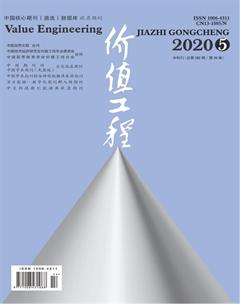泉域富水地层复杂管线条件下盾构机车站中板水下接收施工技术研究
李克金



摘要:本文结合济南富水泉域地区及复杂的管线条件,就如何解决轨道交通盾构机接收安全问题提供解决思路。济南地铁R1线大杨站南端头盾构接收前,洞门水平探孔发现水量极大,接收区管线复杂,无地面加固条件。采用水下接收确保施工安全。既有车站中板完成水中接收,须对既有结构进行改造,增加水下接收挡水围堰、接收围堰防水、接收中板支撑体系加固,确保接收中板提供盾构机机头自重、水源自重、接收托架及填充砂浆重力的要求,通过对有限元建模分析,确保盾构接收自重荷载及动荷载对车站结构损伤在安全控制范围内。
Abstract: This paper provides a solution to the problem of receiving safety of shield machine for rail transit by combining with the complex pipeline conditions in the rich spring area of Jinan. Before receiving the shield machine at the south end of Dayang Station on Jinan Metro Line R1, the horizontal hole of the portal found that the water quantity was extremely large, the pipeline in the receiving area was complex, and there was no ground reinforcement condition. Adopt underwater receiving to ensure construction safety. In order to ensure that the receiving plate provides the shield machine head weight, water source weight, receiving bracket and filling mortar gravity, it is necessary to modify the existing structure, increase the underwater receiving water retaining cofferdam, receiving cofferdam waterproof, receiving plate support system reinforcement, to ensure the receiving plate to provide shield machine head weight, water weight, receiving bracket and filling mortar gravity requirements, Through the finite element modeling and analysis to ensure that the shield received deadweight load and dynamic load damage to the station structure within the safety control range.
關键词:富水泉域;复杂管线;盾构接收;车站中板;建模
Key words: water-rich spring area;complex pipeline;shield receiver;station plate;modeling
中图分类号:U455.4;U231.3 文献标识码:A 文章编号:1006-4311(2020)14-0148-03
0 引言
济南市作为泉城驰名中外,独特的地质条件形成独特的城市。近年来随着各城市轨道交通的蓬勃发展,济南市轨道交通起步较晚,独特的地质条件更是增加了城市轨道交通的建设难度。尽管济南地区泉水成因各学术专业未达成共识,但济南复杂的地质条件及独特地形已是公认的事实。泉城地质条件富水且地下水流速快、补给快,地层地质既有过水通道又有隔水层。济南作为山东省省会城市,城市管线复杂,如各铁路线电力线、通讯线、国防光缆、给水、燃气等各种管线,盾构接收始发必然面临诸多问题。当前地铁线路规划成网、线路交叉,盾构在中板接收会越来越多。复杂的水文地质条件下,盾构始发接收区加固可能发生无法加固或加固效果不理想状态,不满足正常始发接收条件,须采用地铁车站中板水下接收技术。本文基于济南轨道交通R1线大杨站盾构接收技术研究成果,为济南或其他类似水文地质条件下盾构接收提供技术参考。
1 工程简介
区间风井~大杨庄站区间线路沿党杨路向北到达大杨庄站。区间隧道为标准单洞单线圆形断面,盾构法施工,接收端头隧道线间距17m,地面标高32.5m,隧道底部标高15.4m。大杨庄车站位于经十西路与党杨路、齐鲁大道相交处,沿齐鲁大道呈南北向布置。是R1线与规划M3线的换乘站,L型换乘,采用明挖法施工,接收端为地下三层结构,盾构在负二层进行接收,接收底部预浇筑临时板,作为接收下沉井使用。车站主体结构顶板覆土约2.8~4.1m,与M3线换乘节点处底板埋深约为26m。

